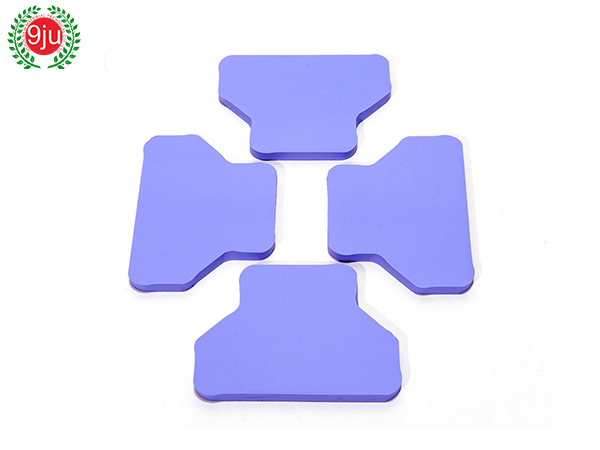Thermal pads are an important part of various industries and play a vital role in managing heat dissipation and ensuring that electronic devices operate efficiently. Designed to conduct heat away from sensitive components such as integrated circuits and processors, these pads are widely used in electronic devices, automotive applications and industrial machinery. Thermal pad applications are diverse and cover a wide range of industries and products.

In the electronics industry, thermal pads are commonly used in electronic devices such as smartphones, laptops, and game consoles. These pads are placed between the central processing unit (CPU) and heat-generating components such as heat sinks to facilitate heat transfer from sensitive electronic components. By effectively dissipating heat, thermal pads help prevent overheating and ensure reliable performance of electronic devices.
Additionally, the automotive industry uses thermal pads extensively in various applications. In electric vehicles, thermal pads are used to manage the heat generated by battery packs and power electronics. These gaskets help maintain the optimal operating temperature of these components, thereby increasing the overall efficiency and longevity of your vehicle’s electrical system. In addition, thermal pads are used in automotive lighting systems to dissipate the heat generated by LED modules to ensure their normal operation and service life.
Additionally, the industrial machinery industry relies on thermal pads for thermal management of various equipment and machinery. These pads are used in power electronics, motor drives and industrial automation systems to dissipate heat and keep critical components running efficiently. In industrial applications, thermal pads play a vital role in preventing overheating and ensuring reliable performance of machinery in harsh environments.
The application of thermal pads extends to the renewable energy sector, particularly in solar panels and wind turbines. Thermal pads are used to manage the heat generated by electrical components in these systems, ensuring their optimal performance and longevity. By effectively dissipating heat, thermal pads help improve the overall efficiency and reliability of renewable energy systems, supporting the transition to sustainable energy.
In consumer electronics, the use of thermal pads is common in a variety of products, including gaming consoles, desktop computers, and high-performance laptops. These devices often contain powerful processors and graphics cards that generate a lot of heat during operation. Thermal pads are used to facilitate heat transfer between these components, preventing thermal throttling and ensuring consistent performance during demanding tasks such as gaming and content creation.
Additionally, the aerospace and defense industry uses thermal pads in critical applications such as avionics systems, radar equipment, and communications equipment. These pads play a critical role in managing heat dissipation in aerospace and defense electronics, ensuring mission-critical systems operate reliably in challenging environments.
In summary, thermal pad applications are diverse and span a wide range of industries and products, including electronics, automotive applications, industrial machinery, renewable energy systems, consumer electronics, and aerospace and defense technology. By promoting efficient heat dissipation, thermal pads help improve the reliable performance and service life of electronic components and systems in various fields, highlighting their importance in modern technology and industrial applications.
Media Contact
Company Name: JOJUN New Material Technology Co., Ltd.
Email: Send Email
Country: China
Website: https://www.jojun.net/
